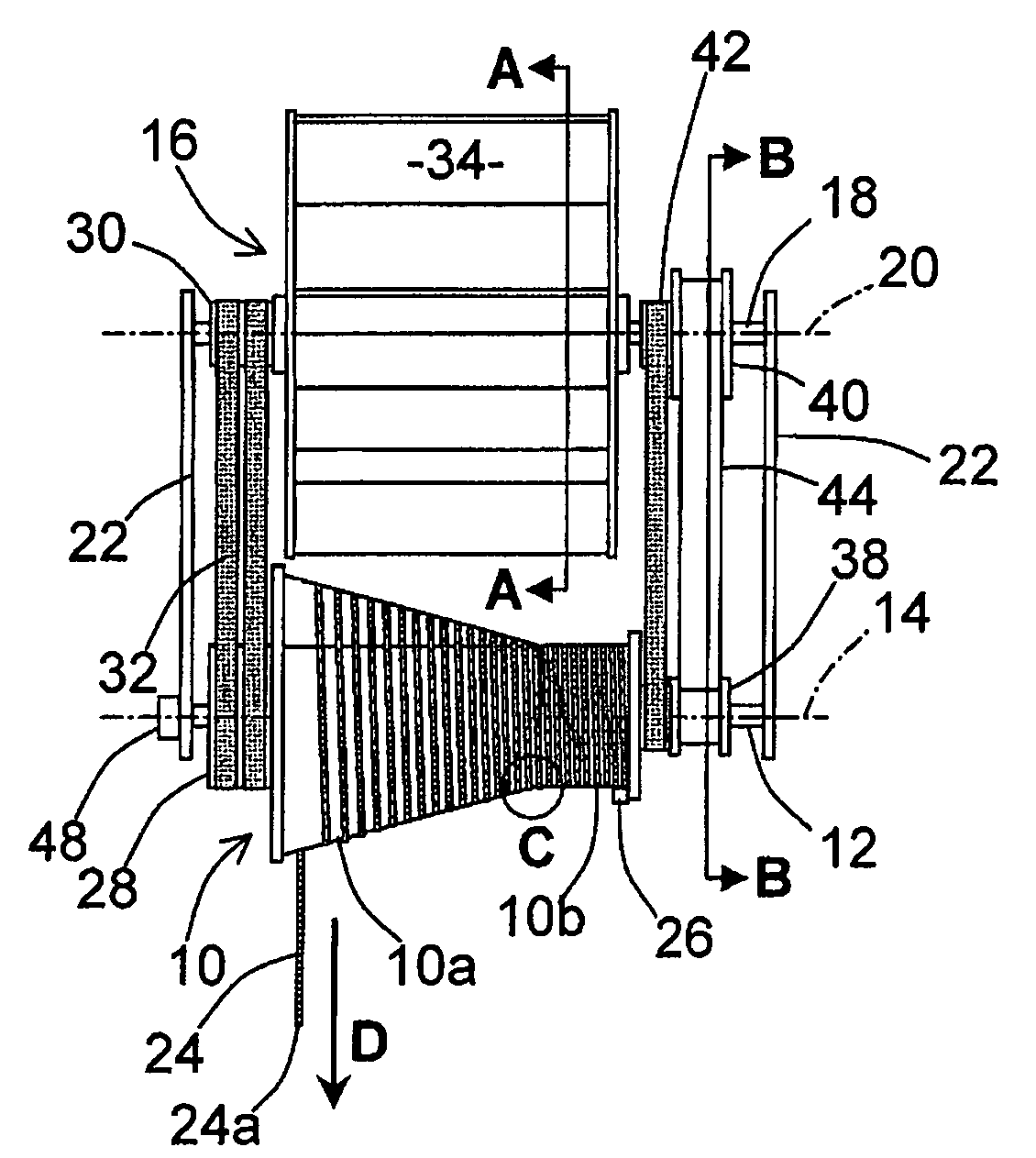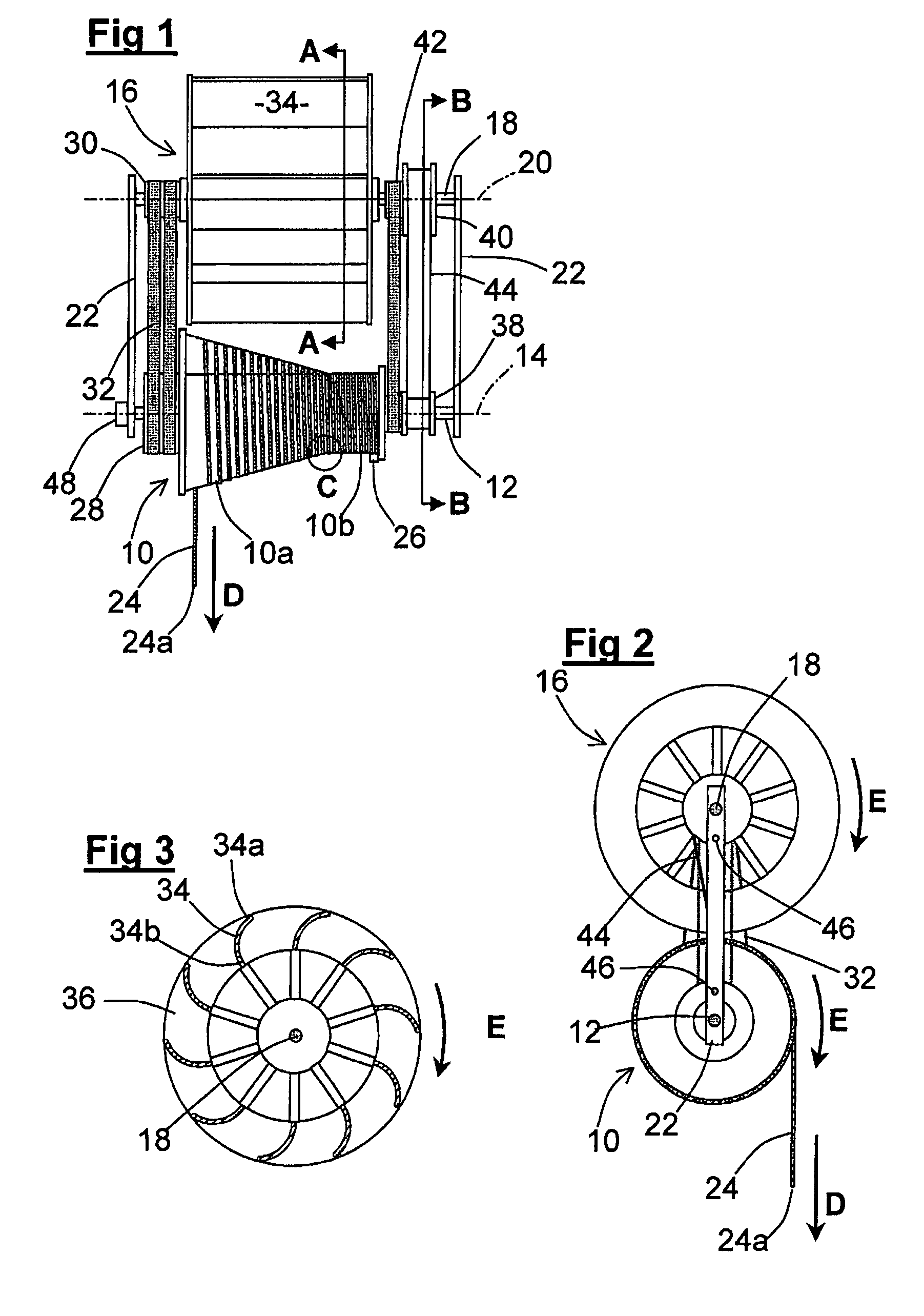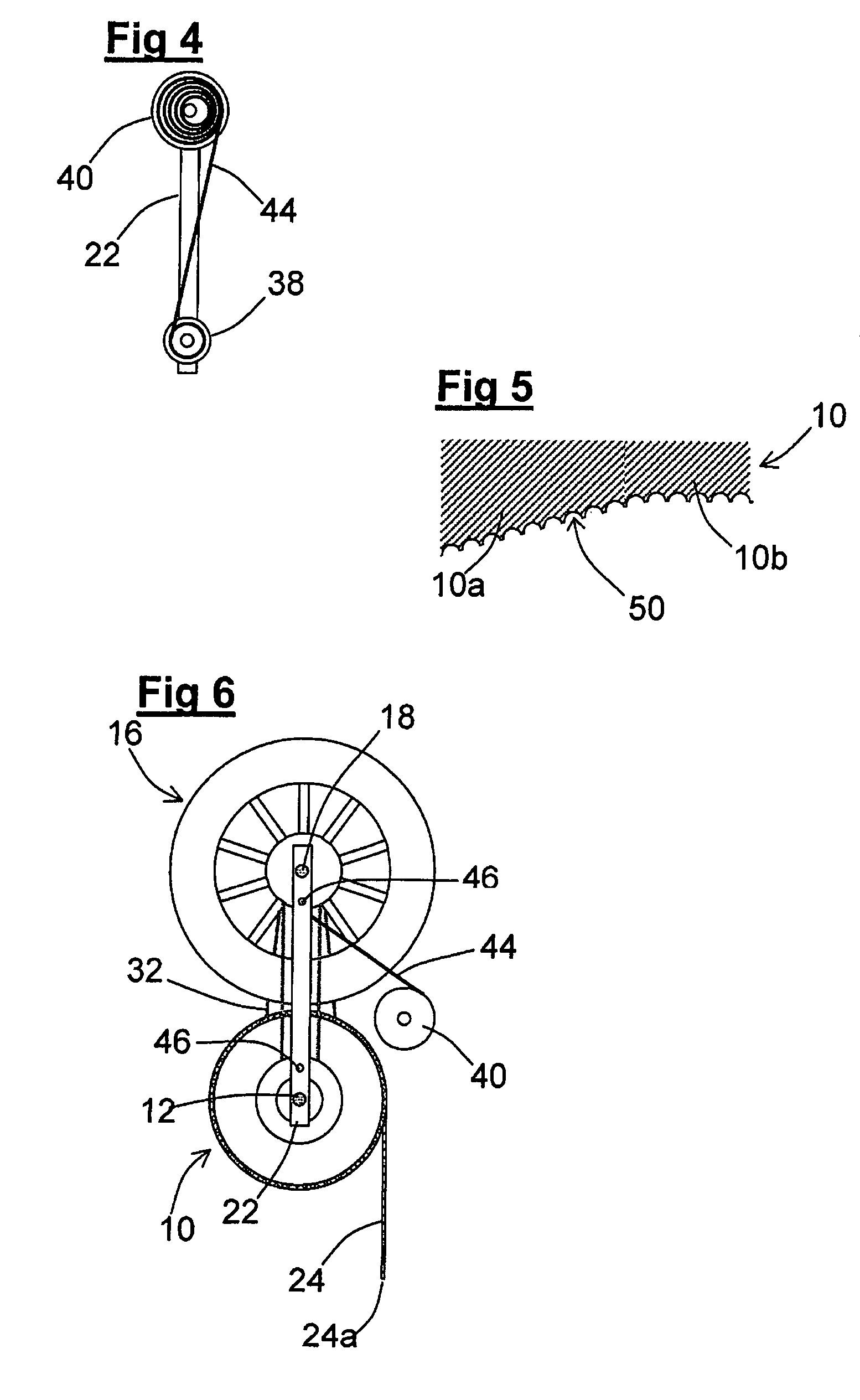Windage braking
a technology of windage brake and windage rod, which is applied in the direction of lifting frames, lifting devices, sport apparatus, etc., can solve the problems of no way of adjusting the speed of the fan relative to the speed of the spool, difficulty in controlling, and very rapid unwinding of the line, so as to save time and cost, high strength, and strong and robust
- Summary
- Abstract
- Description
- Claims
- Application Information
AI Technical Summary
Benefits of technology
Problems solved by technology
Method used
Image
Examples
Embodiment Construction
[0026]Referring first to FIGS. 1 and 2, the windage brake shown therein comprises a spool 10 mounted on a spindle 12 to be rotatable about a first axis 14 and a fan 16 mounted on a spindle 18 to be rotatable about a second axis 20 parallel to the first axis 14. The spindles 12 and 18 extend between a pair of end plates 22 thereby forming a frame to carry the windage brake. A line 24 having a free end 24a is wound helically upon the spool 10, its other end being secured to the spool 10 by a clamp 26. The line 24 is a braid of gel-spun polyethylene filaments with high strength, high modulus and low creep available under the registered trade mark Dyneema from DSM of The Netherlands.
[0027]Secured to one end (the left hand end as seen in FIG. 1) of the spool 10 and rotatable about the spindle 12 is a first drive pulley 28. Secured to the left hand end of the fan 16 and rotatable therewith about the spindle 18 is a second drive pulley 30. A pair of drive belts 32 interconnect the pulleys ...
PUM
 Login to View More
Login to View More Abstract
Description
Claims
Application Information
 Login to View More
Login to View More - R&D
- Intellectual Property
- Life Sciences
- Materials
- Tech Scout
- Unparalleled Data Quality
- Higher Quality Content
- 60% Fewer Hallucinations
Browse by: Latest US Patents, China's latest patents, Technical Efficacy Thesaurus, Application Domain, Technology Topic, Popular Technical Reports.
© 2025 PatSnap. All rights reserved.Legal|Privacy policy|Modern Slavery Act Transparency Statement|Sitemap|About US| Contact US: help@patsnap.com



